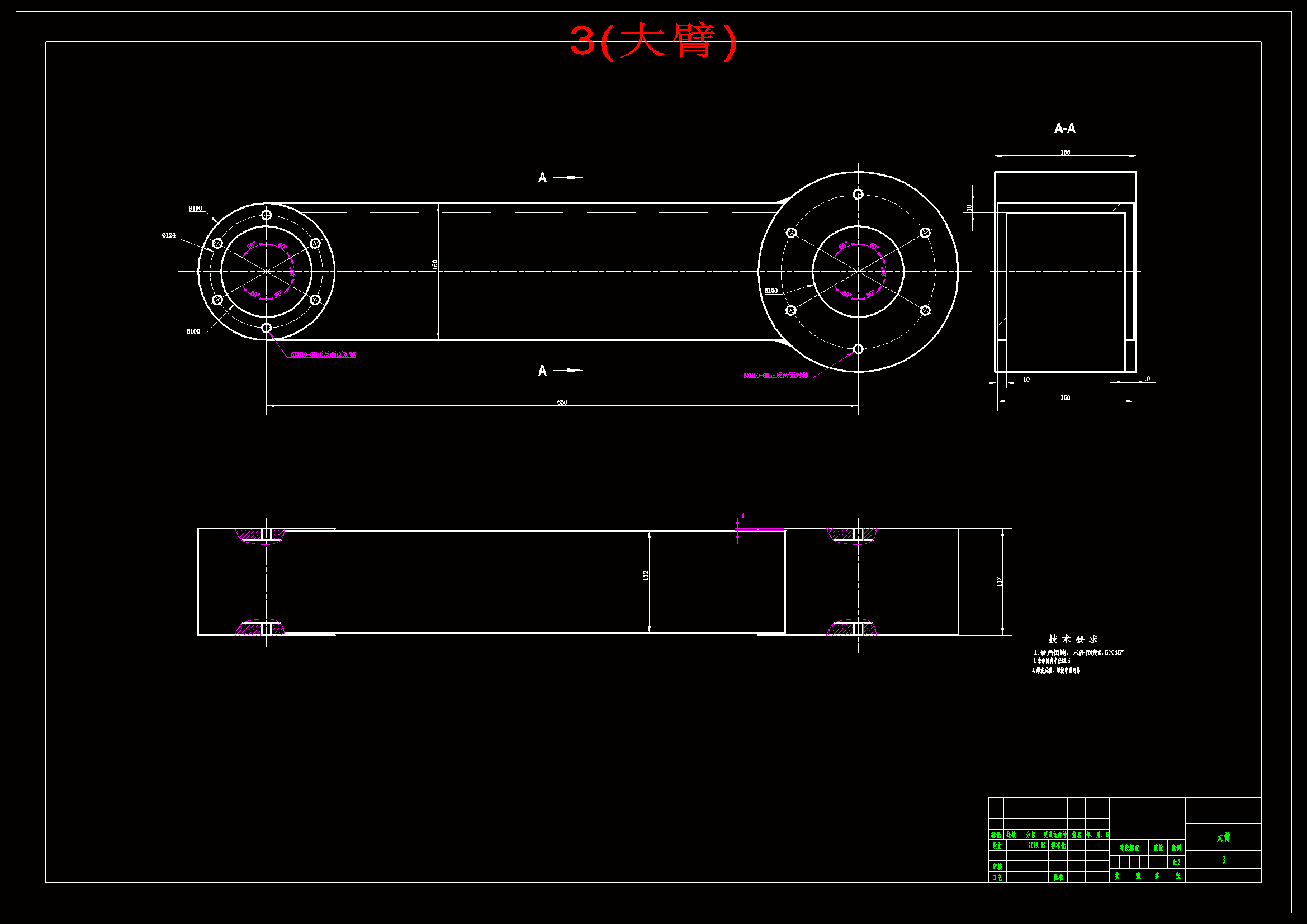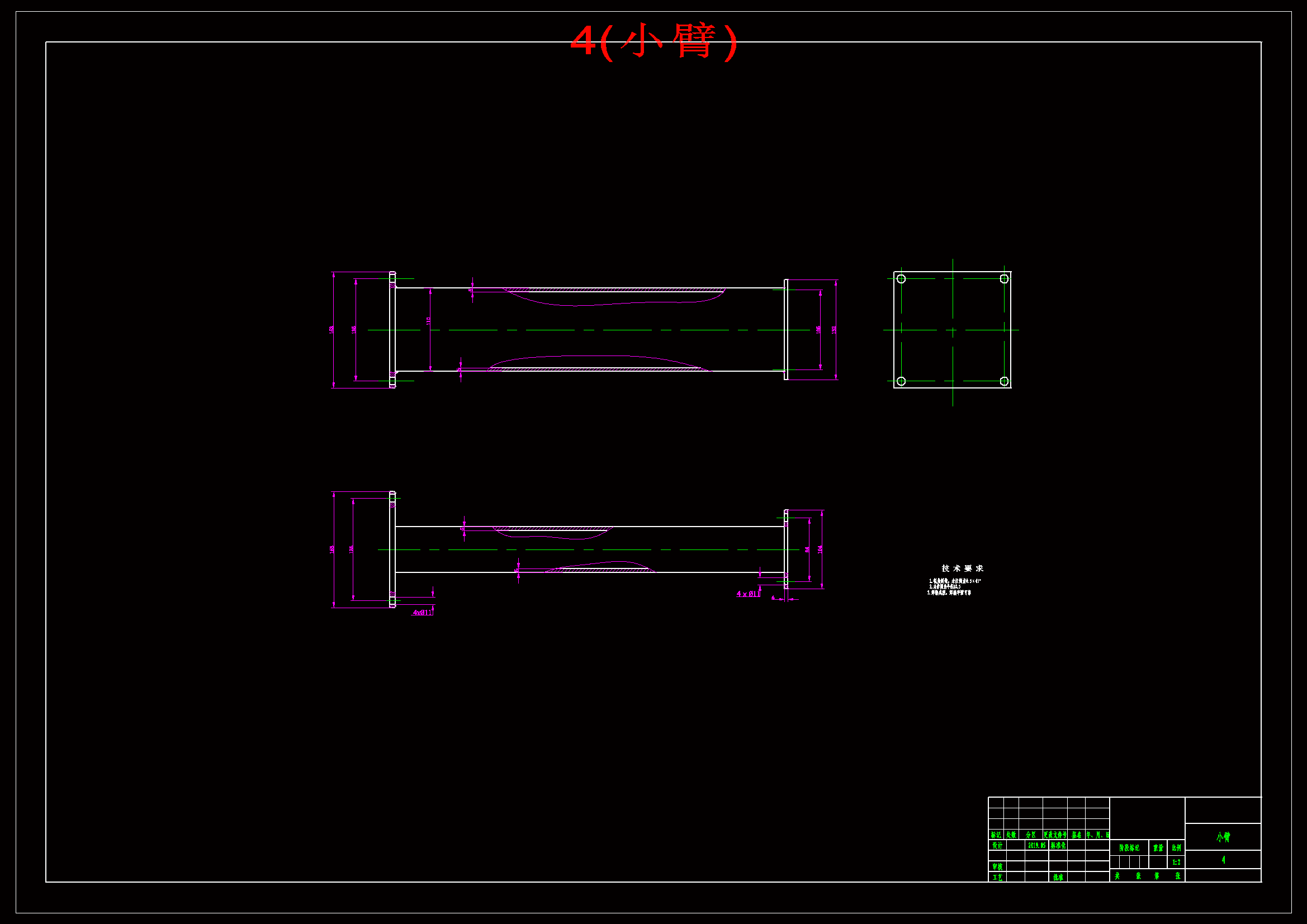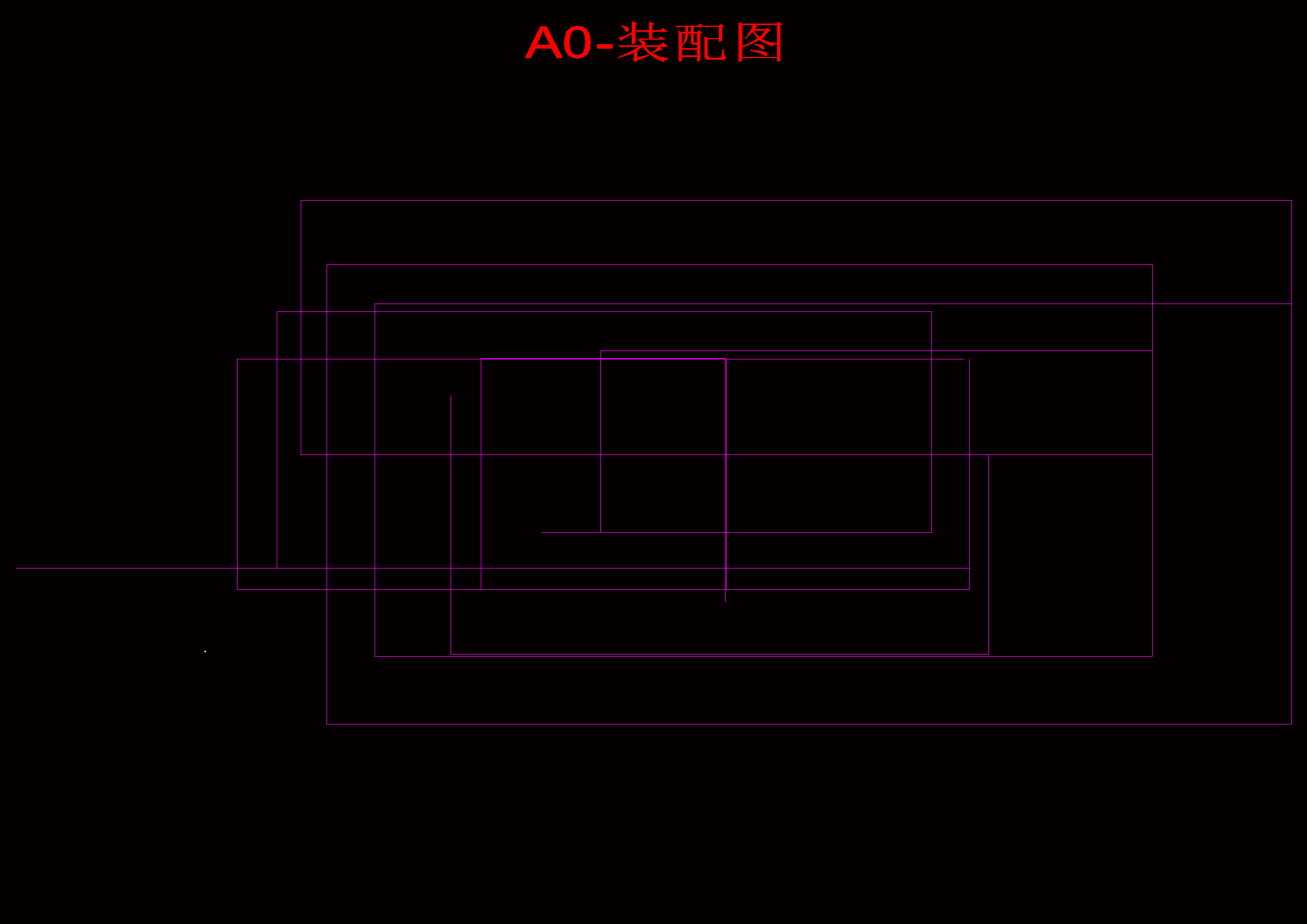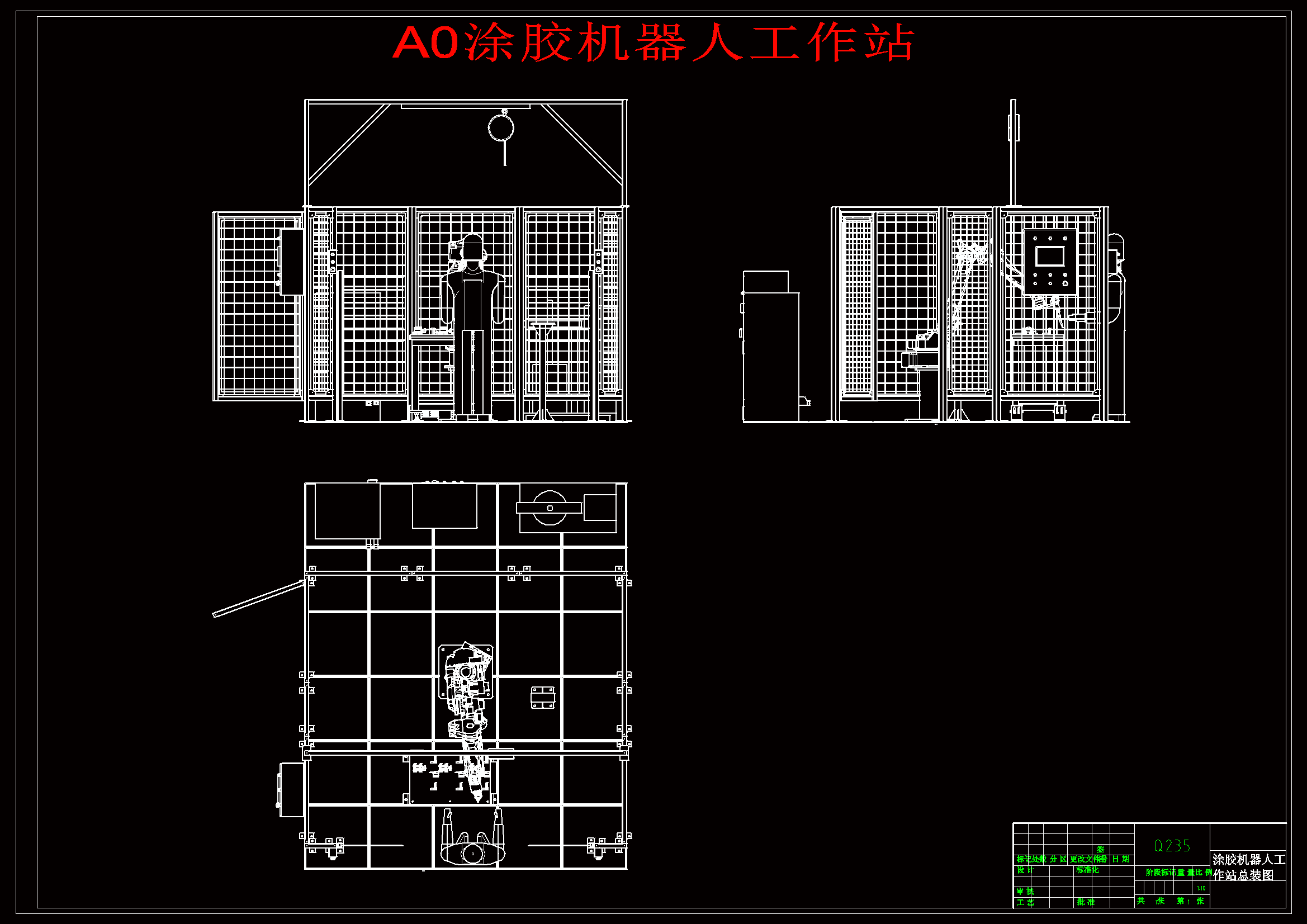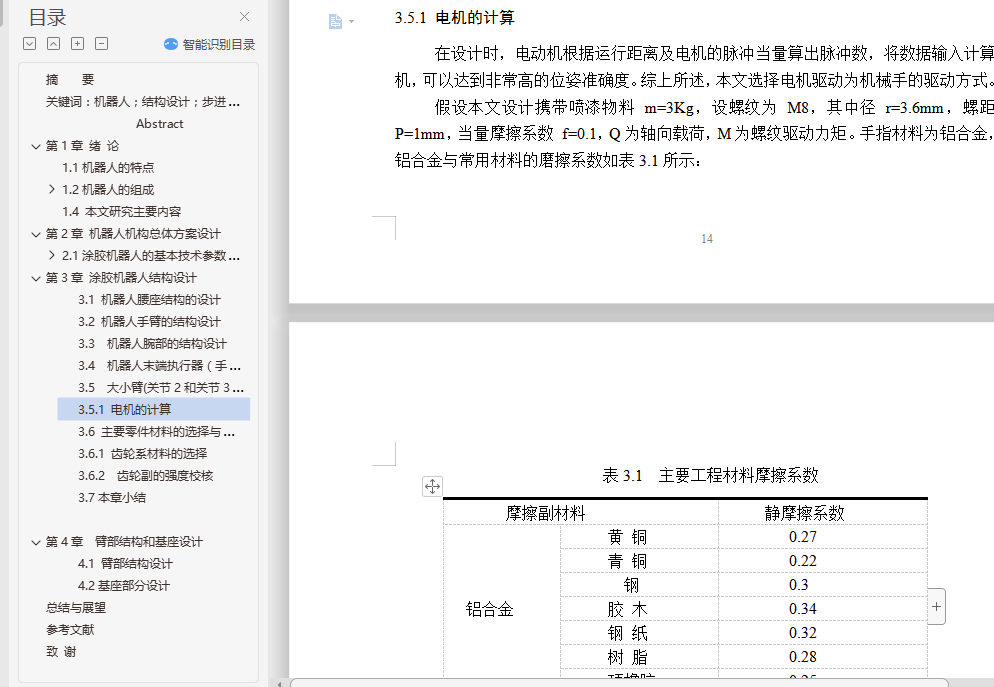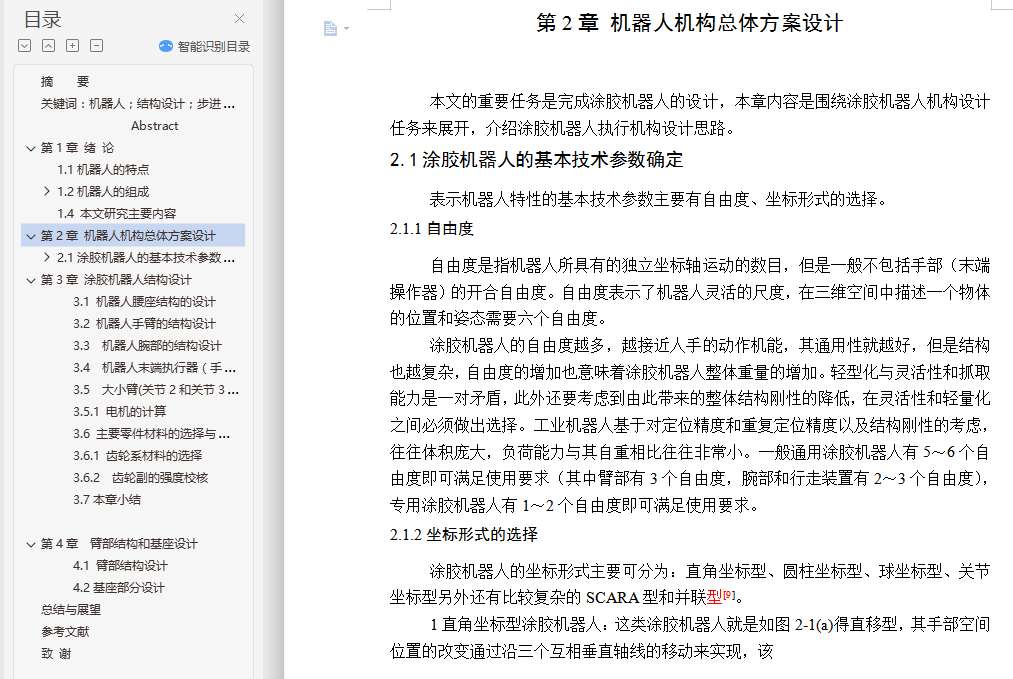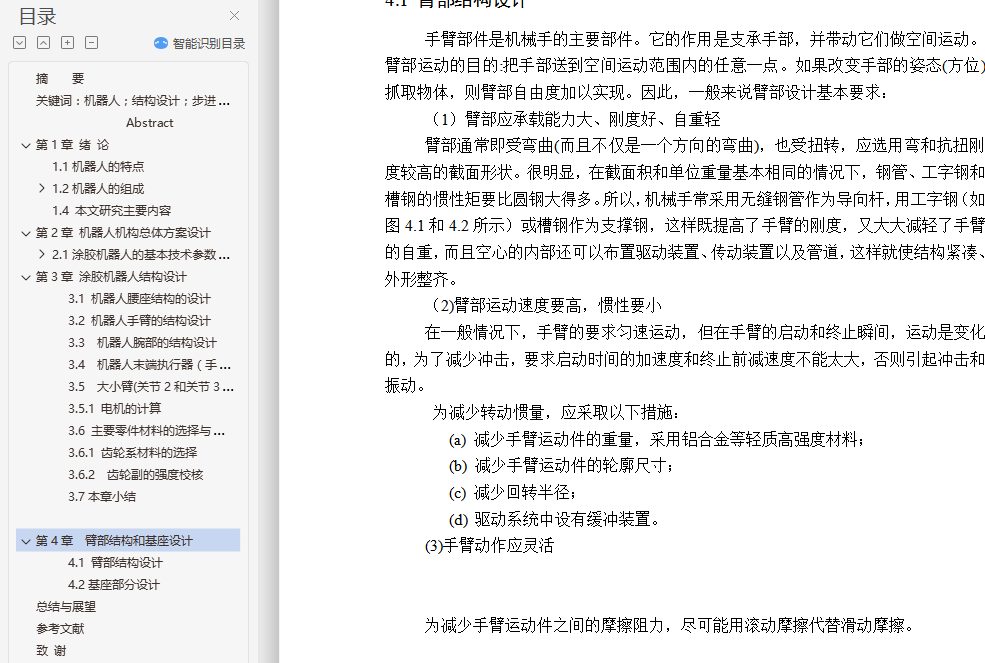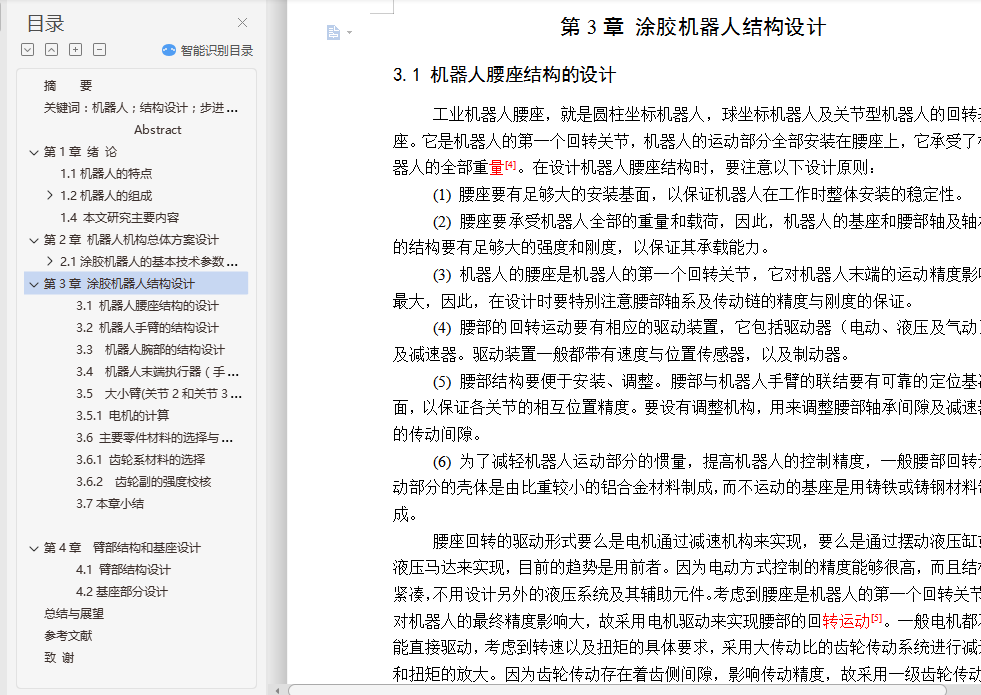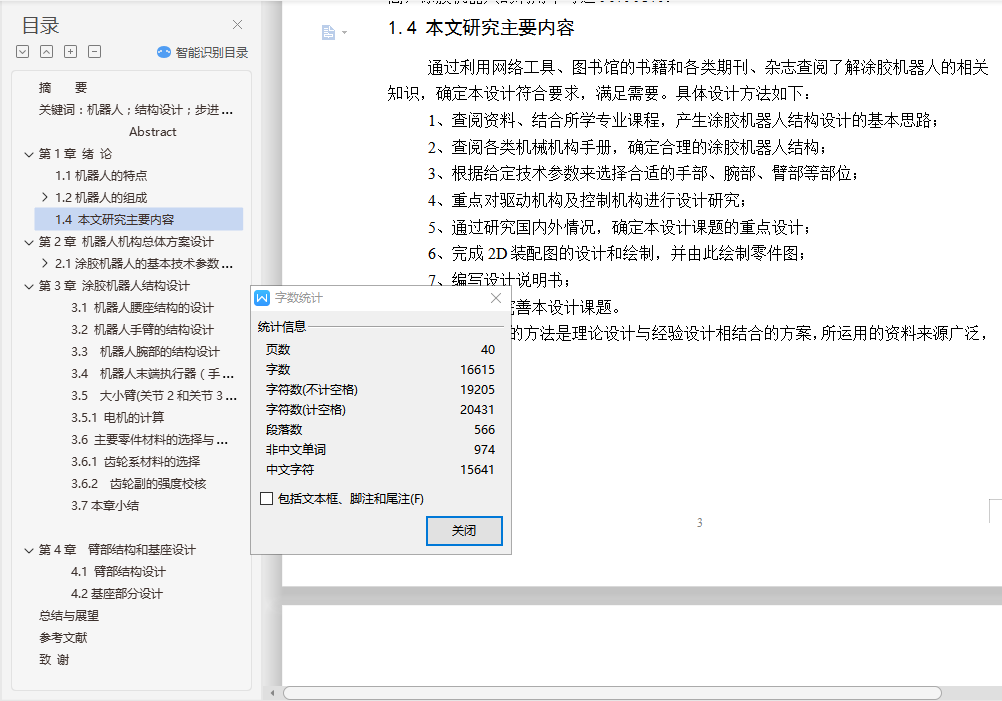摘 要
机器人是一种机械技术与电子技术相结合的高技术产品。采用机器人是提高产品质量与劳动生产率,实现生产过程自动化,改善劳动条件,减轻劳动强度的一种有效手段。它是一种模仿人体上肢的部分功能,按照预定要求输送工件或握持工具进行操作的自动化技术装备。机器人可以代替人手的繁重劳动,显著减轻工人的劳动强度,改善劳动条件,提高劳动生产率和生产自动化水平。工业生产中经常出现的笨重工件的搬运和长期、频繁、单调的操作,采用机器人是有效的;此外,它能在高温、低温、深水、宇宙、放射性和其它有毒、污染环境条件下进行操作,更显示其优越性,有着广阔的发展前途。
本课题的主要内容是采用机器人代替人来进行喷漆作业,机器人可以代替很多重复性的体力劳动,从而减轻工人的劳动强度,提高生产效率。结合设计的各方面的知识,在设计过程中学会怎样发现问题。解决问题.研究问题。并且在设计中融入自己的想法和构思,提高自己的创新能力。尽力使机器人使用方便,结构简单。
关键词:机器人;结构设计;步进电机;回转
Abstract
A robot is a mechanical technology and electronic technology, the combination of high technology products. The robot is to improve product quality and labor productivity, and achieve the production process automation, improve working conditions, reduce the labor intensity of an effective means of. It is a copy of the upper part of the human body functions, in accordance with a predetermined transfer request or the workpiece hold the tools to operate the automation technology and equipment. The robot can replace the staff of the heavy labor, significantly reduced labor intensity of workers, improve working conditions, improve labor productivity and production level of automation. Industrial production often appears in the heavy work, frequent handling and long-term, monotonous operation, the robot is effective; in addition, it can be in high temperature, low temperature, water, the universe, radioactive and other toxic, pollution of the environment under the conditions of operation, but also show its superiority, there are broad development prospects.
The main content of this paper is the use of robots to paint, robots can take the place of a lot of repetitive manual work, thereby reducing the labor intensity of workers, improve the production efficiency. Combined with the design of the various aspects of knowledge, in the design process to learn how to find problems. To solve the problem of problem. And in the design into their thoughts and ideas, enhance own innovation ability. Try to make the robot has the advantages of convenient use, simple structure.
Key Words: Robot; structure design; stepper motor; rotary
目 录
摘 要………………………………………………………………………………I
Abstract……………………………………………………………………………. V
目 录……………………………………………………………………………..V
第1章 绪 论………………………………………………………………………1
1.1机器人的特点……………………………………………………………….1
1.2机器人的组成……………………………………………………………….2
1.2.1执行机构……………………………………………………………...2
1.2.2驱动机构……………………………………………………………...2
1.2.3控制机构……………………………………………………………...2
1.3涂胶机器人………………………………………………………………….3
1.4 本文研究主要内容…………………………………………………………3
第2章 机器人机构总体方案设计………………………………………………..4
2.1涂胶机器人的基本技术参数确定………………………………………….4
2.1.1自由度………………………………………………………………...4
2.1.2坐标形式的选择……………………………………………………...4
2.1.3规格参数……………………………………………………………...6
2.1.4有效负载……………………………………………………………...6
2.1.5运动特性……………………………………………………………...7
2.1.6工作范围……………………………………………………………...7
2.2 涂胶机器人材料的选择……………………………………………………7
2.3机械臂的运动方式………………………………………………………….8
2.4涂胶机器人的驱动元件…………………………………………………….9
2.5 机构整体设计……………………………………………………………..10
2.6 立柱回转关节设计………………………………………………………...11
第3章 涂胶机器人结构设计……………………………………………………..12
3.1 机器人腰座结构的设计…………………………………………………...12
3.2 机器人手臂的结构设计…………………………………………………...12
3.3 机器人腕部的结构设计………………………………………………….13
3.4 机器人末端执行器(手爪)的设计…………………………………….14
3.5 大小臂(关节2和关节3)电机的计算与型号选择……………………....16
3.5.1 电机的计算………………………………………………………….14
3.6 主要零件材料的选择与强度校核…………………………………...……18
3.6.1 齿轮系材料的选择………………………………………………….16
3.6.2 齿轮副的强度校核………………………………………………...20
3.7本章小结……………………………………………………...…………….20
第4章 臂部结构和基座设计……………………………………………………21
4.1 大、小臂部结构设计………………………………………………...……21
4.2 基座设计…………………………………………………………………22
总结与展望………………………………………………………………………….31
参考文献…………………………………………………………………………….33
致 谢 35

